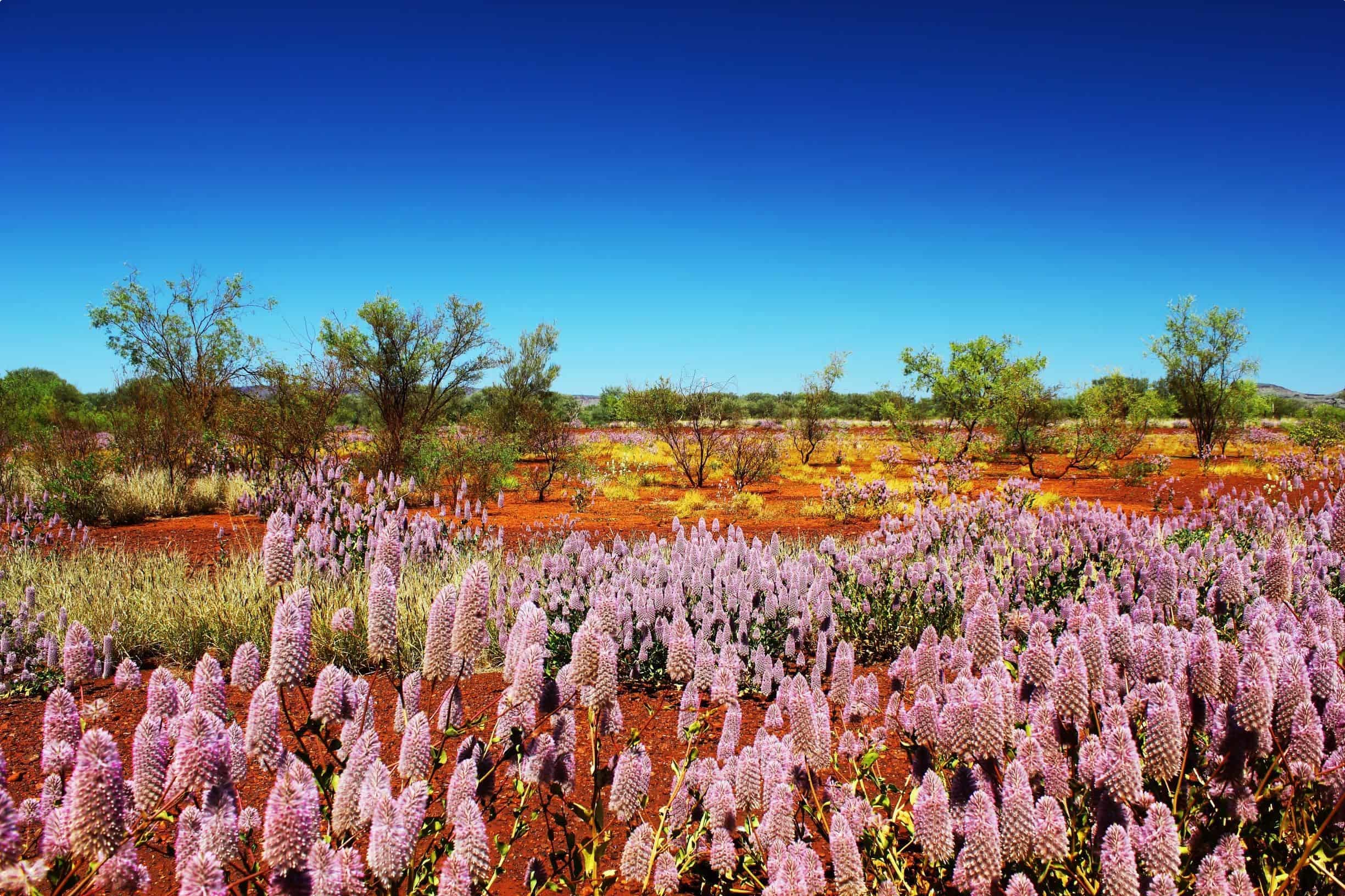Surviving the Sun: The Remarkable Plants of the Australian Outback
Surviving the Sun: The Remarkable Plants of the Australian Outback

The Australian outback, a vast and unforgiving expanse of arid land, is a testament to the resilience of life. Despite the harsh conditions, an incredible array of plant life has adapted to thrive in this unforgiving environment. From towering trees to tiny succulents, the outback’s flora is a fascinating study in survival.
Facing the Challenges:
Related Articles: Surviving the Sun: The Remarkable Plants of the Australian Outback
- From Outback To Skincare: The Rise Of Australian Native Fruits In Beauty
- Beyond "Dog": Uncovering The Diverse Aboriginal Words For Canine Companions
- Can Two People In A Tribe Have The Same Totem Animal? Unveiling The Mystery Of Spirit Guides
- Unmasking The Past: Where To Find Victoria BC Treaties And Their Indigenous Legacy
- A Taste Of Australia: Exploring The Land Down Under’s Most Famous Fruits And Vegetables
The outback presents a unique set of challenges for plant life. Scorching temperatures, relentless sun, and infrequent rainfall create a hostile environment where only the most adaptable species can survive.
- Water Scarcity: Rainfall is unpredictable and often scarce, making water conservation a critical factor.
- Extreme Temperatures: The outback experiences scorching summers and freezing winters, pushing plants to their limits.
- Nutrient-Poor Soils: The harsh environment often leads to nutrient-poor soils, further challenging plant growth.
Adaptations for Survival:
To overcome these challenges, outback plants have evolved an array of ingenious adaptations:

1. Water Conservation:
- Deep Roots: Many plants have developed deep root systems to tap into groundwater reserves. The iconic mulga (Acacia aneura), for example, can send its roots down 30 meters or more.
- Succulence: Plants like spinifex (Triodia spp.) and kangaroo paw (Anigozanthos spp.) store water in their fleshy leaves and stems, allowing them to survive long periods of drought.
- Leaf Reduction: Some plants, like saltbush (Atriplex spp.), have reduced their leaves to minimize water loss through transpiration.
- Waxy Coatings: A waxy coating on leaves, like in grevillea (Grevillea spp.), helps prevent water loss.

2. Heat Tolerance:
- Sun Protection: Many plants have developed silvery or hairy leaves to reflect sunlight and reduce heat absorption.
- Leaf Orientation: Some plants, like the desert oak (Allocasuarina decaisneana), orient their leaves vertically to minimize sun exposure.
- Deep Roots: Deep roots provide access to cooler, deeper soil layers, reducing the impact of surface heat.

3. Nutrient Acquisition:
- Nitrogen Fixation: Some plants, like acacias (Acacia spp.), have symbiotic relationships with nitrogen-fixing bacteria, allowing them to extract nitrogen from the atmosphere.
- Nutrient Recycling: Plants like spinifex help break down and recycle organic matter, enriching the soil.
4. Reproduction:
- Wind Pollination: Many outback plants rely on wind for pollination, as insects are often scarce.
- Seed Dispersal: Plants like mulga have seeds that are dispersed by wind or animals, allowing them to spread to new areas.
Iconic Outback Plants:
The outback is home to a diverse range of iconic plants, each with its unique adaptations and ecological role:
- Mulga (Acacia aneura): This hardy tree is a symbol of the outback, providing shade, food, and shelter for animals. Its deep roots allow it to survive long periods of drought.
- Spinifex (Triodia spp.): This spiky grass forms vast, dense tussocks, dominating large areas of the outback. It plays a crucial role in stabilizing the soil and providing habitat for small animals.
- Saltbush (Atriplex spp.): These salt-tolerant shrubs are important for grazing animals, providing a source of food and water.
- Desert Oak (Allocasuarina decaisneana): This unique tree is adapted to extreme drought and can live for hundreds of years.
- Kangaroo Paw (Anigozanthos spp.): These striking wildflowers are a popular tourist attraction, known for their unique, furry flowers.
- Sturt’s Desert Pea (Swainsona formosa): This striking red flower is a symbol of the outback, with its vibrant color contrasting against the arid landscape.
- Boab (Adansonia gregorii): These massive trees, resembling giant bottles, are a unique feature of the outback. They store water in their trunks and provide shelter for animals.
The Importance of Outback Plants:
The plants of the outback are not just beautiful and fascinating; they play a vital role in the ecosystem:
- Soil Stability: They help stabilize the soil, preventing erosion and desertification.
- Habitat for Animals: They provide food, shelter, and breeding grounds for a wide variety of animals.
- Carbon Sequestration: They absorb carbon dioxide from the atmosphere, helping to mitigate climate change.
- Cultural Significance: Many outback plants have cultural significance for Aboriginal communities, providing food, medicine, and materials for tools and ceremonies.
Protecting the Outback Flora:
The outback’s unique flora is facing threats from climate change, land clearing, and invasive species. Conservation efforts are crucial to protect these remarkable plants for future generations:
- Protected Areas: Establishing protected areas helps safeguard vulnerable species and their habitats.
- Sustainable Land Management: Practices like rotational grazing and controlled burning can help maintain the health of outback ecosystems.
- Community Engagement: Involving local communities in conservation efforts is essential for long-term success.
The outback’s plant life is a testament to the power of adaptation and the resilience of life. By appreciating and protecting these remarkable species, we can ensure their survival and the continued health of this iconic Australian landscape.
FAQs:
1. What are the most common plants in the Australian outback?
Some of the most common plants include mulga, spinifex, saltbush, desert oak, and kangaroo paw.
2. How do outback plants survive with limited water?
They have evolved adaptations like deep roots, succulent leaves, waxy coatings, and leaf reduction to conserve water.
3. What are some of the challenges faced by outback plants?
They face challenges like extreme temperatures, limited rainfall, and nutrient-poor soils.
4. How do outback plants reproduce?
Many rely on wind pollination and seed dispersal by wind or animals.
5. What are the ecological roles of outback plants?
They play vital roles in soil stability, providing habitat for animals, carbon sequestration, and cultural significance.
6. How can we protect the outback’s flora?
We can protect them through protected areas, sustainable land management, and community engagement in conservation efforts.

Closure
Thus, we hope this article has provided valuable insights into Surviving the Sun: The Remarkable Plants of the Australian Outback. We thank you for taking the time to read this article. See you in our next article!


